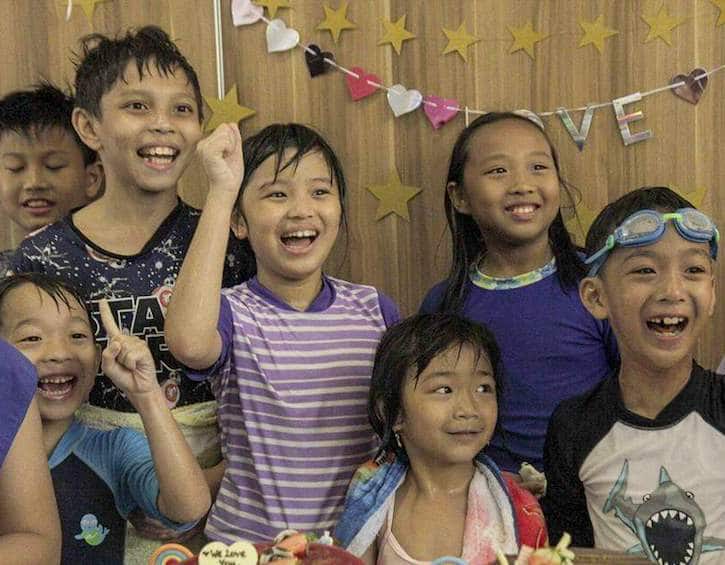
“Pursue positive attitudes first, rather than good grades.” Important advice on the transition from preschool to primary school from a preschool principal.
Let’s talk about attitude. It’s a state of mind and beliefs, habits, plus motives associated with a particular object or topic. Our attitudes drive us to do things, which are either positive or negative, and every action will have its repercussions. It is so important to develop a positive attitude towards life from as early as possible. Otherwise we risk them growing up with a negative attitude and set of beliefs that could lead them on a less-than-beneficial path in life.
As a parent and preschool principal, with many years of experience working with young children and families, I’m fortunate to see many navigate the emotional transition from preschool to primary school in a positive way, thanks in part to the crucial support of their families. However, there are some who do struggle when they need to face the reality of suddenly handling the demands of tests and exams that come along with primary school. What is the secret ingredient that can makes or break this transition?
Here is my take as a mum and educator in the preschool sector: grades are not the main indicator for success.
Remember, parents: how a child performs on an exam, does not determine their future success. Exams are not an indication of how smart a child is. As a mum, even I sometimes worry when my child’s test results do not meet our initial expectations. Of course, I also have the power to stamp down this instinct and see it from another perspective. Right from the start, many students are conditioned to believe that they have to be better than their classmates, rather than focusing on their own strengths and passions and finding fulfilment as they discover their own identity.

Let’s get metaphorical. Take, for example, the Dwarf Willow, the shortest tree on Earth, and the Sequoia Redwood, the tallest. If your perspective is simply that being taller is better, even if you went around chopping down Dwarf Willows to only leave the tallest one, it would still be significantly shorter than even the smallest Sequoia. Then all you’re left with is a lonely Dwarf Willow; no matter what, it can never be like the Sequoia Redwood. This narrow mindset, is what we need to avoid in life, but is sadly all too common in human behaviour – especially in the education system; students can become crippled by trying to be better than others, and in the process sacrifice the enjoyment of their school journey, as well as relationships with others.
Children reach their maximum potential when they can freely express themselves in the face of appropriate challenges; this also helps to instil a positive attitude, too. Only when a human being can balance extended periods of joyfulness with challenges, will they then push their limits and achieve what they never thought they could.

Positive attitudes achieve positive results. There is power in words, and we should always carefully choose what we say when discussing new challenges with our kids. Bolster your child with positive words and encouragement, and you will be rewarded with a confident child, who will hopefully in turn, become a positive influence upon others and the next generation.
We need to learn to speak right to the hearts of our children, praising them for their efforts, instead of simply praising them for results. Acknowledge the process they’ve been through, or how hard they tried to achieve a result, rather than condemning them when they fail to reach adult’s ideals.
A positive attitude can also breed a positive character. If a child believes he or she can, secure in the knowledge that they have someone who always believes and accepts them regardless, then he or she will learn to fail gracefully, stand up, dust themselves down and try again. Of course, we also need to acknowledge the harsh realities of life (it’s not always fair!). If we can educate our children to be discerning and willing to admit mistakes in life – and hopefully never give up – that will build resilience, which is so vital in life, at every stage.

On the flip side, habitual bad attitudes are often the product of past experiences and events. We, as parents, should choose not to deposit bad attitudes into the mind bank of our children, as it creates the possibility of low self-esteem, stress, fear, resentment, anger and an inability to handle change. Start ridding yourself of this heavy baggage straight away and proceed to make that change in your child’s heart and mind, which will reap a lifetime of rewards.
We have the power to “unveil the veil of education” from the eyes of our children, by focusing on pursuing positive attitudes in life, rather than conditioning a child that getting good grades will determine success in life, which might not always be the case.
Let’s relearn what we used to think is right, and instead focus on cultivating positive attitudes as we lead our children through the next stage of their education.
Read more: Different Learner Types: Tailored Tips for Success
This article was originally published on Sassy Mama Singapore on 4, June 2018.
 View All
View All











 View All
View All





 View All
View All


 View All
View All










